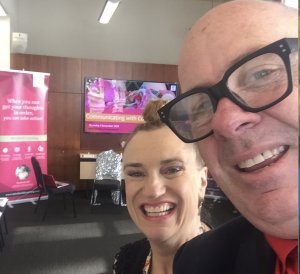We are so happy it’s 2021 and we have no problem being back at work because we love what we do – which is helping your magnificent selves be even more fabulous at work!
Here’s what we did on our holidays; hung out with friends and family, drank kale juices, jumped off a jetty, read books, gave crazy Christmas presents, op-shopped, and downloaded Bridgerton but haven’t got round to watching it yet.
We hope your holidays were just as invigorating/relaxing, whatever is right for you. The break certainly helped us reflect on how lucky we are to live here in Aotearoa NZ, and we feel super-thankful for that, while knowing that there are further challenges ahead.
Doing a smidge of strategic planning this morning, what we learned from last year is that creativity and bravery are the way to go in business. Thank you all who allowed us to share our resilience tools and bring our full sparkliness to coaching and workshops (that genie is not going back in the bottle).
People have asked us about our goals for this year. Here they are.
We want to look back on now from five years time, and know we did our best to be kind, helpful, generous, responsible, expansive and caring. That we rocked out our MindMeld Values to the max (Creativity, Results, Abundance, Delightful, Professional and Honesty). We all have something going on in our lives and so compassion and reassuring ourselves of our own ‘enuf-ness’ is the way to go in 2021.
On these hot days at work, wiggle your toes under your desk, and get ready – 2021 is on!





